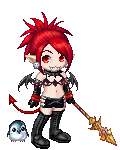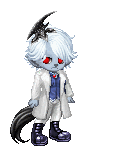- Scottish Fold Shinigami's Gallery
-

- View Profile
- View Fans
- Send Private Message
-
Artist Info:
Dream Avatar<br />
<br />
<br /> <br />
<br />
Total Value: 6,308,525 Gold<br />
[Item Information]<br />
<br />
Item List:<br />
Pink Neko Cosplay<br />
Charcoal Cat Tail<br />
Black Neko Cosplay<br />
Flight of the Macaw<br />
Talsi's Sash<br />
Pale Marionette<br />
Midnight Kei<br />
<br />
<br />
The Man Of Advice And Comfort Feel Free To Come To Me Anyday<br />
<br />
<br />
welcome I am Dayne (Jack) I am here as a service to anyone who needs me. my stream is made for people who need to vent/ask for advice. I am on no ones side but my own so dont bring me into fights. im single again. yes i am a boy. If you need to vent and have a problem with me being gay (or just being me) i will get someone else to assist u.I accept all friend invites but will not tolerate any rude behavior so please be kind, curtious, and mature. I am not as dumb as i may look/seem sometimes i do things unexpected if u need anymore information ask me privetly TATA<br />
<br />
p.s. i love everyone so i dont care who needs my help im here 4 u<br />
<br />
<br />
<br />
<br />
<br />
<br />
<br />
<br />Scottish Fold<br /><br />
From Wikipedia, the free encyclopedia<br />
_______________________________
<br />
<br />
The Scottish Fold—sometimes called Coupari by Canadian breeders[1]—is a breed of cat with a natural dominant-gene mutation that makes its ear cartilage contain a fold, causing the ears to bend forward and down towards the front of their head, which gives the cat what is often described as an "owl-like" appearance.<br />
<br />
Originally called Flops (for "floppy" ears), the name Scottish Fold became the breed's name in 1966. Longhaired Scottish Folds have various official names depending on the certifying agency, being known as the Highland Fold by the ACFA, AACE, and UFO, Scottish Fold Longhair by the TICA, NCFA, ACA, CCA, and CFA, and Longhair Fold by the CFF.<br />
<br />Breed<br /><br />
___________________________________________
<br />
Origin<br />
The original Scottish Fold was a white barn cat named Susie, who was found at a farm near Coupar Angus in Perthshire, Scotland, in 1961. Susie's ears had an unusual fold in their middle, making her resemble an owl. When Susie had kittens, two of them were born with folded ears, and one was acquired by William Ross, a neighbouring farmer and cat-fancier. Ross registered the breed with the Governing Council of the Cat Fancy in Great Britain and started to breed Scottish Fold kittens with the help of geneticist Pat Turner. The breeding program produced 76 kittens in the first three years—42 with folded ears and 34 with straight ears. The conclusion from this was that the ear mutation is due to a simple dominant gene; if one parent provides the gene for straight ears, and one parent provides the gene for folded ears, the kittens will be Folds.<br />
<br />
Susie's only reproducing offspring was a female Fold named Snooks who was also white; a second kitten was neutered shortly after birth. Three months after Snooks' birth, Susie was killed by a car. All Scottish Fold cats share a common ancestry to Susie and Snooks, the origination point assurance a lineage quality rare among pedigreed animals.<br />
<br />
<br />
Acceptance<br />
The breed was not accepted for showing in Great Britain and Europe as it was felt that they would be extremely susceptible to ear problems such as infection, mites, and deafness, but the Folds were exported to America and the breed continued to be established using crosses with British Shorthairs and American Shorthairs. Since initial concerns were brought, the Fold breed has not had the mite and infection problems, though wax buildup in the ears may be greater than in other cats.<br />
<br />
<br />
Popularity<br />
The distinctive physical traits of the breed, combined with their reputation as unusually loving companions, make Folds highly sought-after pets and Fold kittens typically cost considerably more than kittens of more common breeds.<br />
<br />
<br />
<br />characteristics<br /><br />
_________________________________________
Ears<br />
All Folds are born with straight, unfolded ears, and those with the Fold gene will begin to show the fold usually within about 21 days. The original cats only had one fold in their ears, but due to selective breeding breeders have increased the fold to a double or triple crease that causes the ear to lie totally flat against the head. A Scottish fold's ears are meant to be treated with care; they are very delicate.<br />
<br />
“ The breed's distinctive folded ears are produced by an incompletely dominant gene that affects the cartilage of the ears, causing the ears to fold forward and downward, giving a cap-like appearance to the head. Smaller, tightly folded ears set in a cap-like fashion are preferred to a loose fold and larger ear. The large, round eyes and rounded head, cheeks, and whisker pads add to the overall rounded appearance. Despite the folded ears, folds still use their aural appendages to express themselves—the ears swivel to listen, lay back in anger and prick up when the treat bag rustles.” <br />
<br />
<br />
Body<br />
A medium-sized cat (9-13 lbs. for males and 6-9 for females), the Fold's entire body structure, especially the head and face, is generally rounded, and the eyes large and round. The nose will be short with a gentle curve and the cat's body well-rounded with a padded look and medium-to-short legs. The head is domed at the top, and the neck very short. The broadly-spaced eyes give the Scottish Fold a "sweet expression".<br />
<br />
<br />
Coat<br />
Scottish Folds can be either long- or short-haired, and they may have nearly any coat colour or combination of colours (including white) except pointed colours. According to a cat-fancy website :<br />
<br />
“ The Scottish Fold Cats are found in a variety of coats and patterns. The Solid cats are white, black, blue, red, cream, blue-silver, or blue-cream. The silver cats are chinchilla or shaded. The golden cats are chinchilla or shaded. The cameo cats are shell or shaded. The smoke cats are black, blue, or cameo. The tabby pattern cats are classic, mackerel, spotted, ticked, or patched. The tabby cats are silver, blue-silver, blue-silver patched, red, brown, blue, cream, or cameo. The cats can also be tortoiseshell, calico, dilute calico, or bi-color. ” <br />
<br />
<br />
<br />
<br />
<br />
Social<br />
Scottish Folds, whether with folded ears or with normal ears, are typically good-natured and placid and adjust to other animals within a household extremely well. They tend to become very attached to their human caregivers and are by nature quite affectionate. Folds receive high marks for playfulness, affection, and grooming, and are often intelligent, loyal, softspoken, and adaptable to home situations and people.<br />
<br />
<br />
Habits<br />
Folds are also known for sleeping on their backs. This is called the "Buta Position". Scottish Folds typically have soft voices and display a complex repertoire of meows and purrs not found in better-known breeds.[citation needed]<br />
<br />
<br />
health<br />
The typical lifespan of a Scottish Fold is 15 years.<br />
<br />
<br />
Medical complications<br />
Scottish folds are susceptible to polycystic kidney disease (PKD), osteochondritis, and cardiomyopathy.<br />
<br />
Breeding<br />
Because the ears fold nearly a month after birth, Fold kittens cannot immediately be judged as to their type or value, as prominent animal website PetFinder.com describes:<br />
<br />
“ All Folds are born with straight ears. At around three weeks the ears begin to fold, if they are going to. Since it's not readily apparent how many Folds one has, breeders must play a waiting game until the ears develop their final folds. Even then it's difficult to tell if the folds will be the tight folds preferred in the show ring or the looser, pet-quality folds. ” <br />
<br />
In such a breeding scheme, their kittens will be extremely likely (1:4 ratio, virtually guaranteeing at least one per litter) to develop a painful degenerative joint disease that can fuse the tail, ankles and/or knees; the condition is believed to be caused by the dominant (folded-ear) gene, being especially likely to affect Folds with the gene present in pair, rather than mixed single with one recessive (unfolded-ear) gene. This condition can also affect Scottish Folds with one copy of the gene, but usually to a much lesser and medically manageable degree. For this reason the breed is not accepted by either the Governing Council of the Cat Fancy[16] or the Fédération Internationale Féline; this is the reasoning behind the widely-held belief that the only ethical manner of breeding Folds is Fold/nonfold and not Fold/Fold (in the same way Munchkins are bred).<br />
<br />Literature<br /><br />
__________________________________________________
<br />
<br />
Biography<br />
The Scottish Fold is featured in-depth in the short novel The Cat Who Went to Paris by Peter Gethers. The book and its two sequels, A Cat Abroad and The Cat Who'll Live Forever: The Final Adventures of Norton, the Perfect Cat, and His Imperfect Human, document the life of Gethers and his Fold, Norton, from their first meeting to Norton's eventual death and Gether's experiences after the loss.<br />
<br />
- Avg. rating:
- 2 Fans
- Death the Kid
- Comics
- 158 recent comments
-
- A girl I colo...
- Painting And Drawing
- 74 recent comments
-
- happy emo girl.
- Painting And Drawing
- 16 recent comments
-
- allen walker ...
- Comics
- 103 recent comments
-
- Izumi Inverted
- Painting And Drawing
- 9 recent comments
-
- Year of the R...
- Painting And Drawing
- 29 recent comments
-
- Girl
- Painting And Drawing
- 21 recent comments
-
- Elf cutie.
- Painting And Drawing
- 17 recent comments
-
- Love
- Painting And Drawing
- 40 recent comments
-
- A view over Nara
- Painting And Drawing
- 317 recent comments
-
-
^^ read it. its
cute. - Christmas love.
- Holiday Poem Contest
- 5 recent comments
-
- Emo Christmas...
- Painting And Drawing
- 15 recent comments
-
- Molly
- Photography
- 30 recent comments
-
- Casual Swordm...
- Painting And Drawing
- 15 recent comments
-
- Emo chibi
- Painting And Drawing
- 38 recent comments
-
- Inner Battle
- Painting And Drawing
- 29 recent comments
-
- Reina and Zeo...
- Painting And Drawing
- 13 recent comments
-
- Speed Paint A...
- Painting And Drawing
- 29 recent comments
-
- The Tortoise ...
- Painting And Drawing
- 43 recent comments
-
-
My first good
emo poem. Of
course I only
write emo
poems... (Until
recently that
is...) Although
I'm - Needless Needles
- Poetry And Lyrics
- 3 recent comments
-
Comments (0 Comments)
No comments, click on the Add Comment button to add a comment.
























